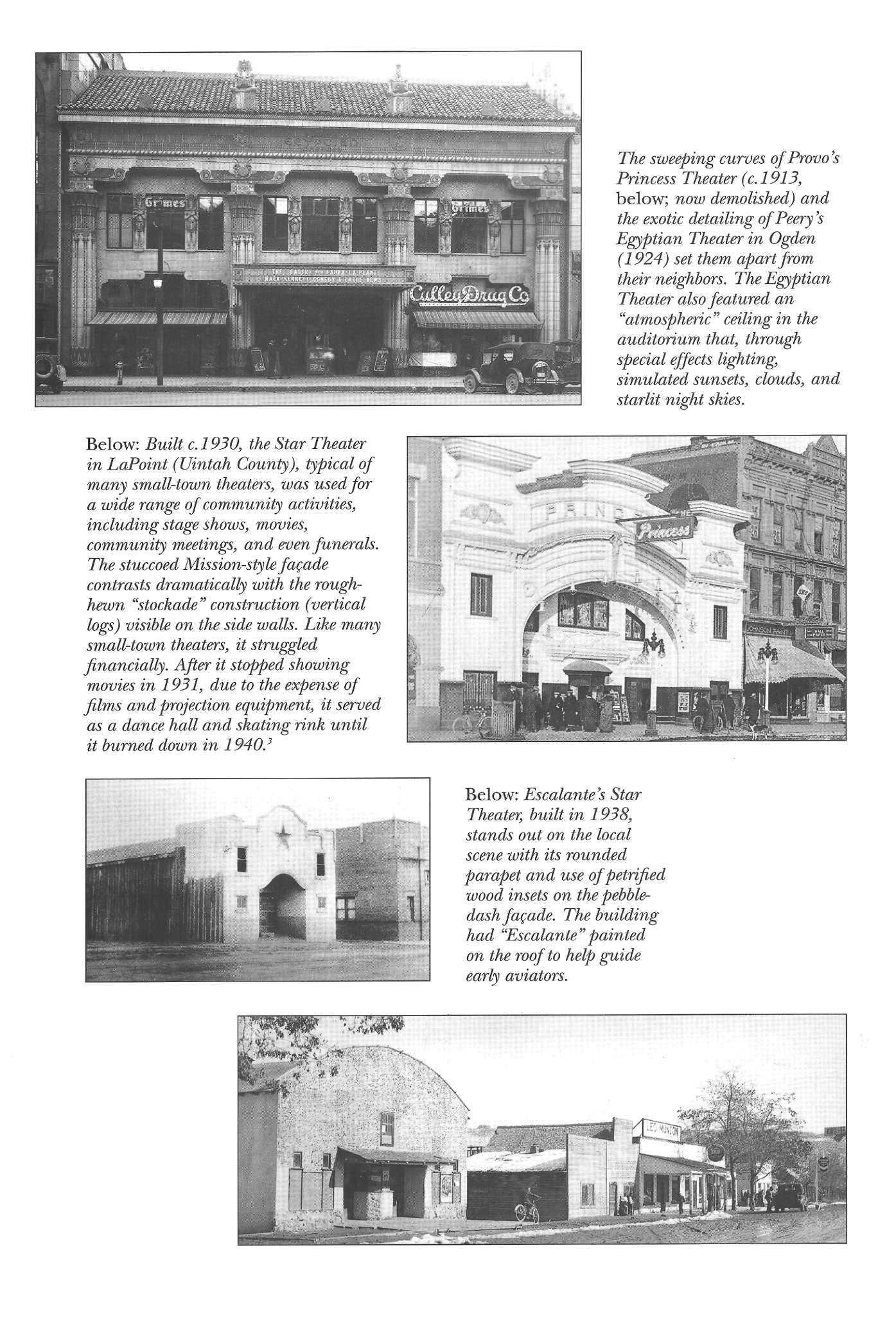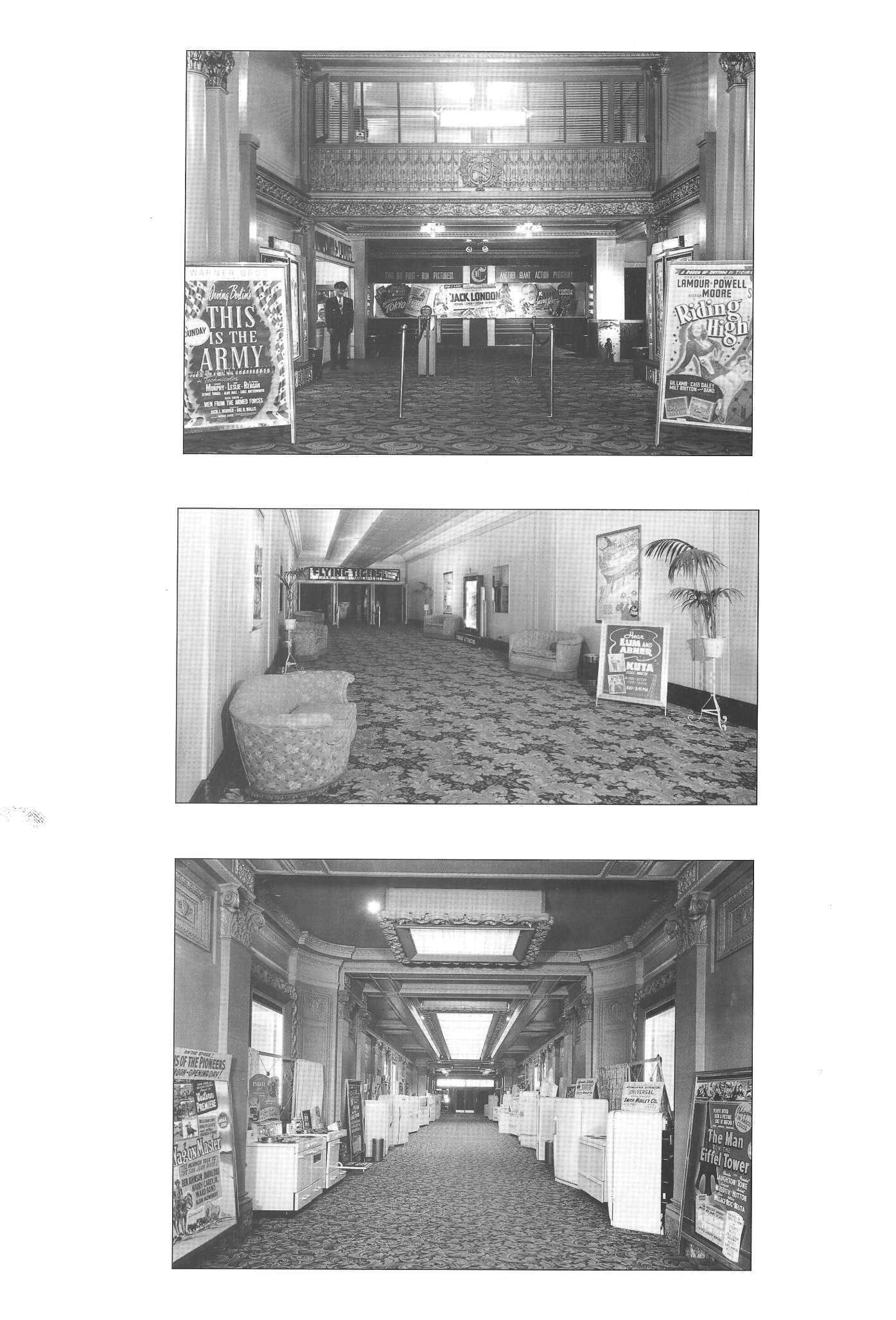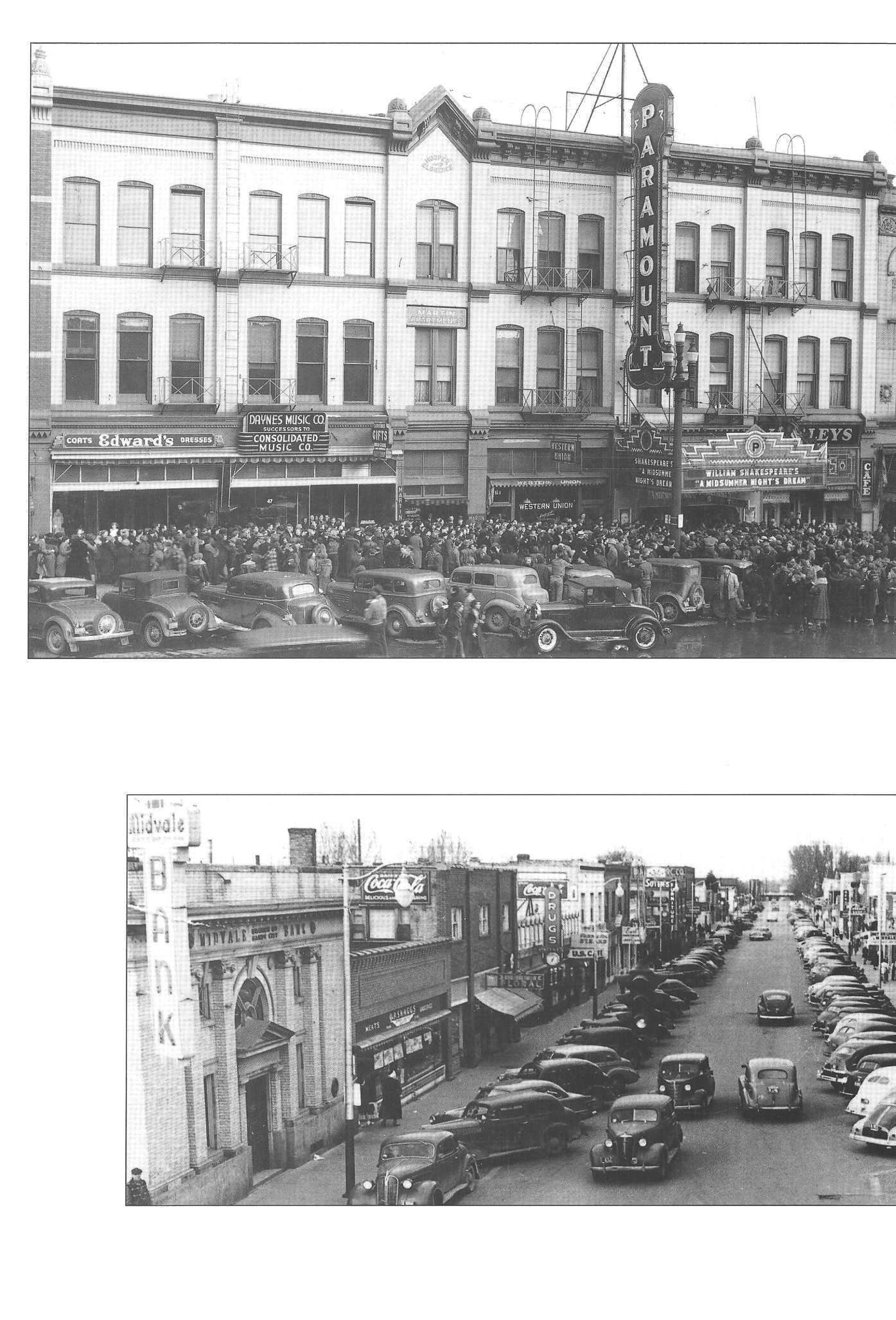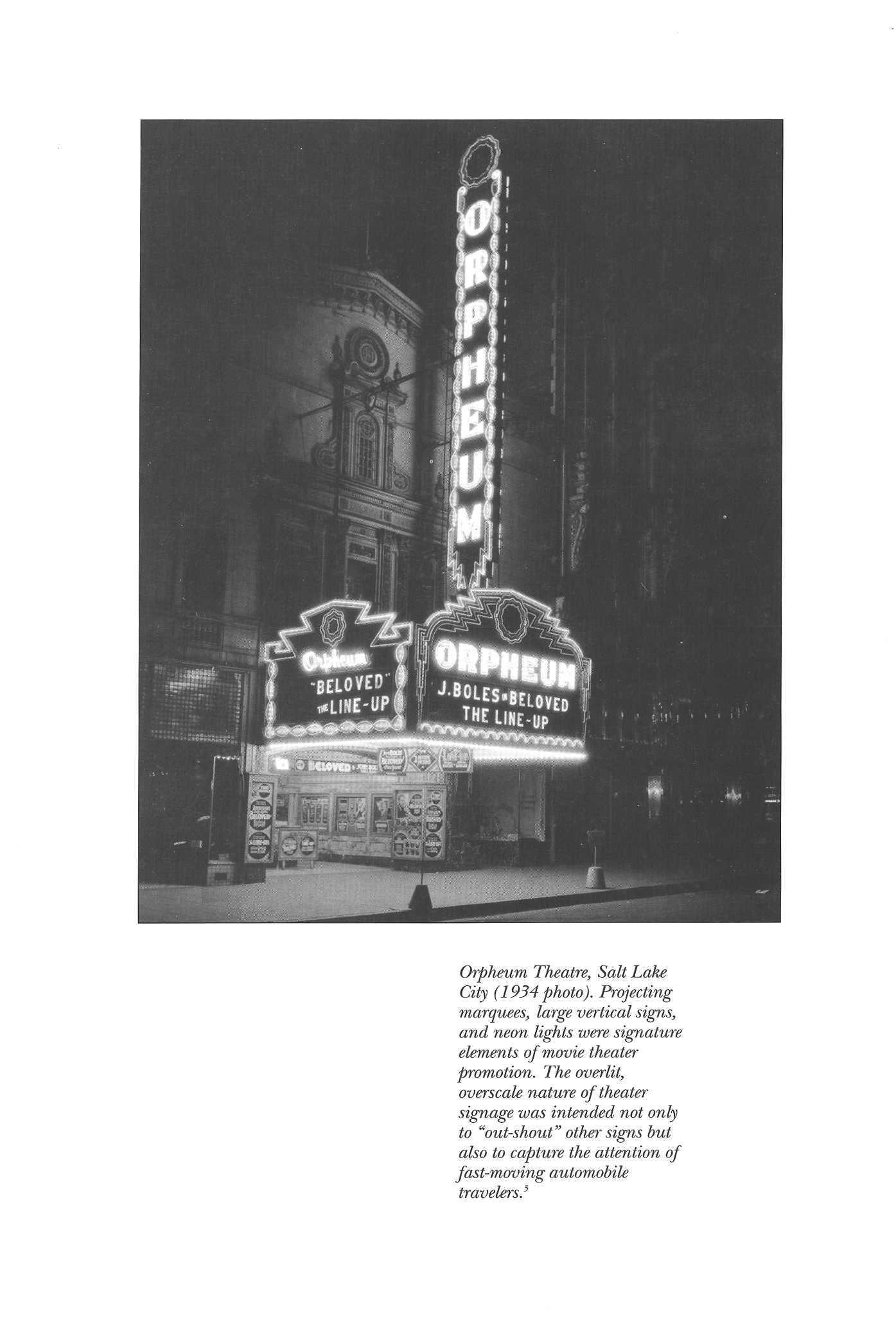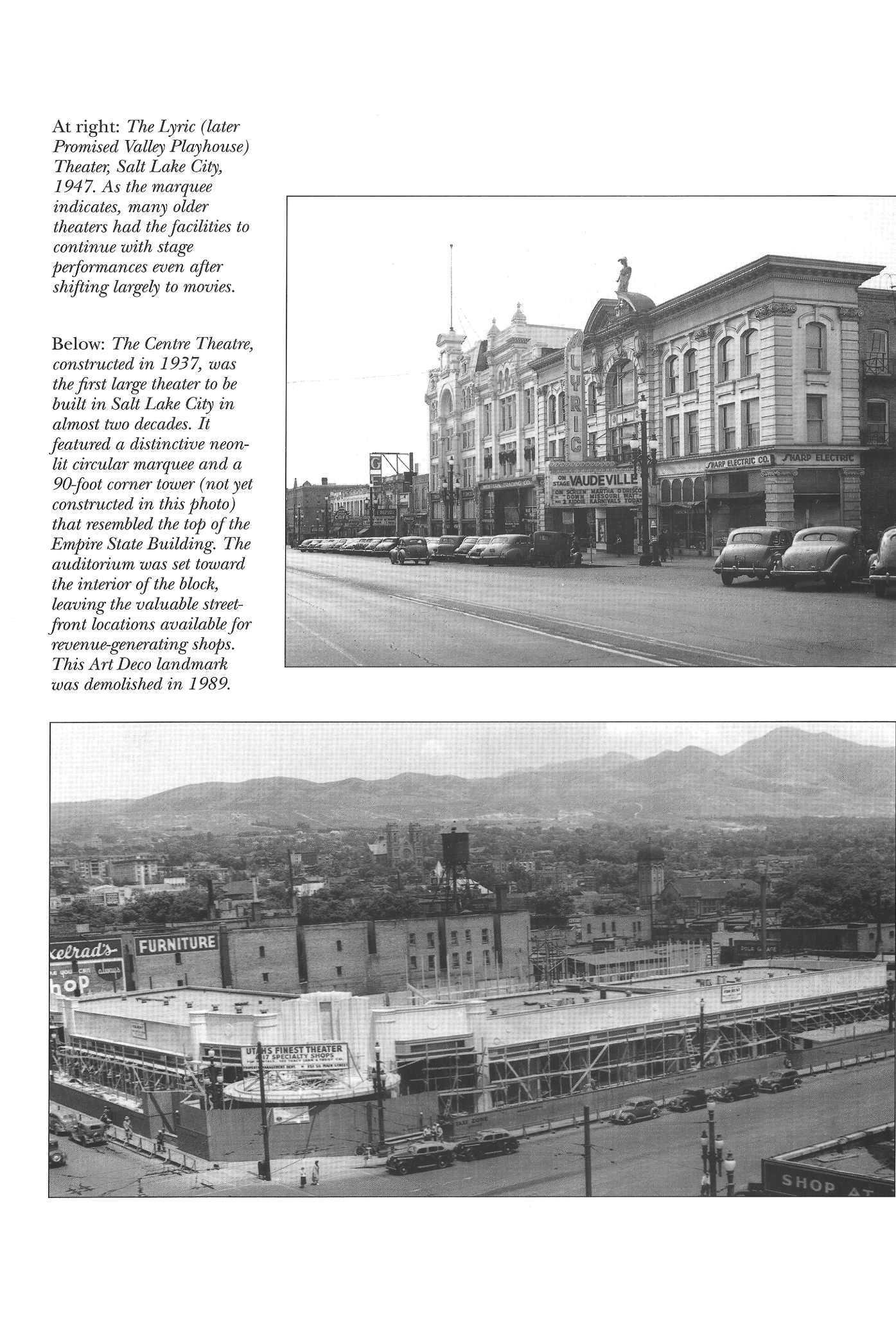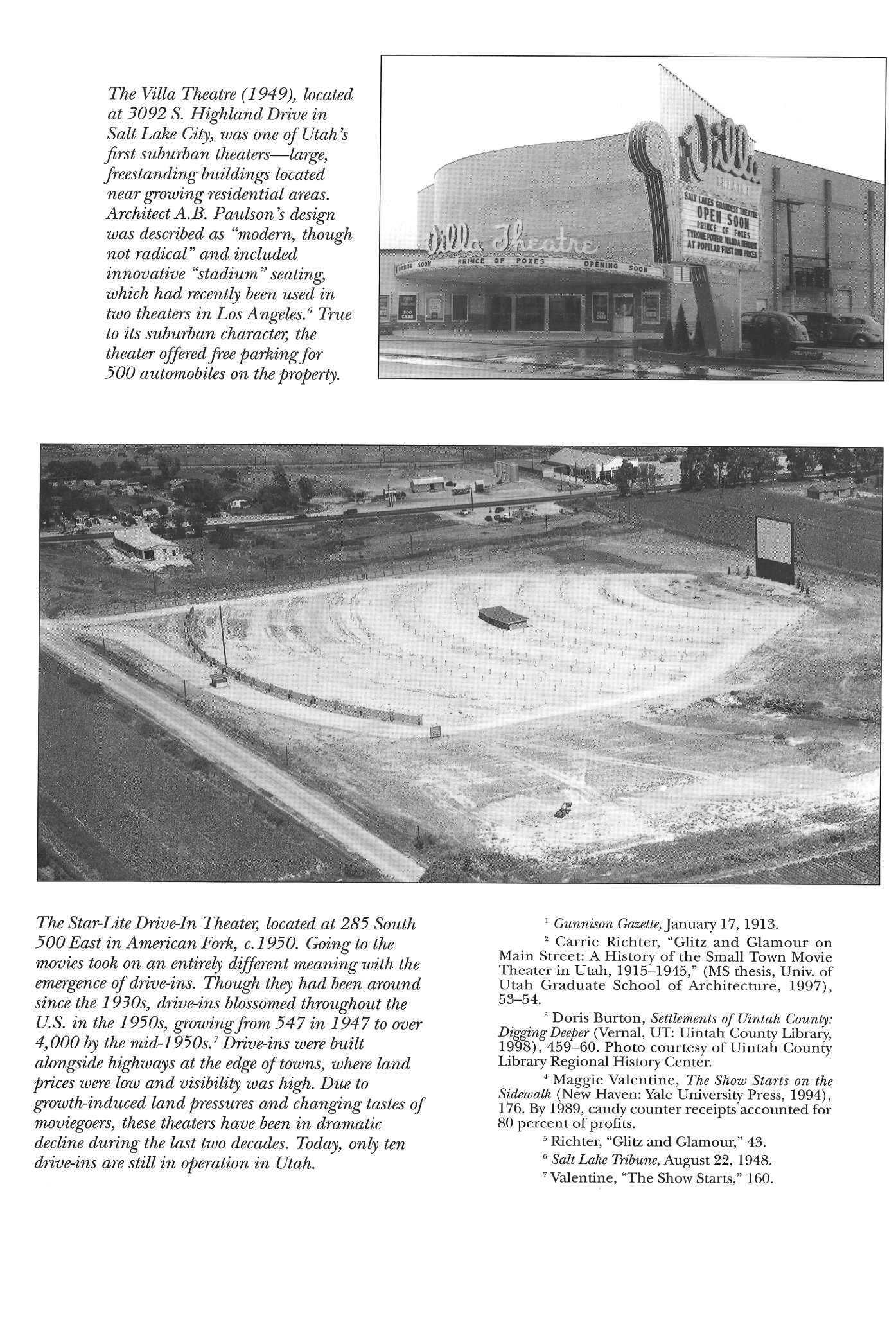
3 minute read
Going to the Movies: A Photo Essay of Theaters
Going to the Movies: A Photo Essay of Theaters
By Roger Roper
MOVIES ARE A 20th-CENTURY phenomenon, and movie theaters are a distinct type of 20th-century architecture. Though descended from opera houses and playhouses of an earlier era, movie theaters quickly developed characteristics of their own. The first theater designed specifically for motion pictures opened in 1902 in Pennsylvania, and by 1905 most large cities in America had one.
The evolution of theater design in Utah paralleled national trends. The flamboyant, exaggerated architecture of movie palaces—including regal Neoclassical designs, exotic Egyptian and Spanish Colonial revivals, or daring Art Deco and Art Moderne styles—set them apart from their more mundane neighbors on Main Street. And if this "pay attention to me" styling was not enough to capture the public eye, projecting marquees bedazzled with lights ensured attention. Other notable features included sidewalk accessible ticket booths, concession stands, and stage-less auditoriums.
A more subtle effect of exuberant theater designs was their ability to create an atmosphere of imagination and suspended rationality. Through those doors and inside those darkened auditoriums patrons were transported to new worlds. The surrounding architectural features helped prepare them for that journey.
Though theaters were built for entertainment, they were also businesses. Location was critical to their success, and theaters always managed to occupy prime downtown sites. Return on investment was important, so many theaters included leaseable commercial space flanking the theater itself and sometimes apartments above. In some instances the front shops were small, while in others they were full-scale commercial spaces, necessitating the familiar long lobby/hallway (usually carpeted and adorned) leading to the deeply recessed auditorium.
Movies and movie theaters initiated cultural change. They had a broadening and homogenizing effect on small-town Utah, "creat[ing] an unprecedented common culture or experience." 2 They brought the larger world into Provo and Panguitch and Parowan, and in the process bound them ever more tightly into the fabric of American culture.
The photographs on the following pages include a representativesample of Utah's historic movie theaters. Some of them remain standing while othershave given way to new developments.
NOTES
Roger Roper is the preservation coordinator for the Utah State Historical Society Unless otherwise noted, all photos are from USHS collections.
